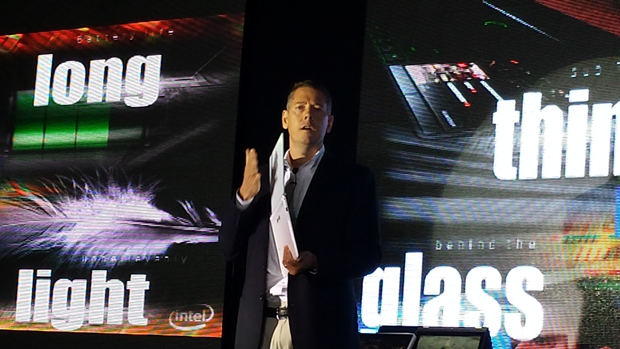Intel has launched the fourth generation family of processors known as Haswell, the anticipated follow up to Ivy Bridge.
Coming in “H”, “M”, “U” and “Y” series, the fourth generation Intel Core family of processors is also a 22 nm process boasting of Tri-Gate technology, similar to its predecessor Ivy Bridge.
But this time, it went further by improving performance up to 35 percent, reducing power down to 6 watts and prolonging the battery life to almost 10 hours of HD video viewing on an ultrabook.

Intel director Leighton Phillips: new ultrabooks powered by the new generation of Intel Core will all be 100 percent touch
The fourth generation Intel Core family is also a complete redesign from ground up and is specifically made to power ultrabooks and its many variants, like the two-in-one and convertible ultrabooks, according to Leighton Phillips, director, product marketing pricing Intel Asia-Pacific.
According to Leighton, the new system on chip (SoC), which features a powerful built-in graphics, raises the bar for the ultrabooks, an ultrathin laptop which Intel introduced back in 2011.
The new ultrabooks or variations of them powered by the new Intel Core processors not only perform better, but are now equally receptive to touch and gesture, including voice input.
Phillips admitted that it’s high time for Intel to introduce technologies that are focused on touch and gestures as consumers are also changing their PC use habits and wanting more touch functions in devices.
He said consumption oriented devices such as tablets are already merging with content oriented devices such as PCs and laptops, with consumers demanding more performance from their mobile devices.
“The new core will take away the PC from the desk. The device will change the user, and there are mammoth ways of influencing the change,” he said adding that new ultrabooks powered by the new generation of Intel Core will all be “100 percent touch.”
“Touch is becoming the norm. Tablets cost is getting down, driving the cost of touch (devices) and (touch devices) will become the majority.”
Intended for performance, the fourth generation Intel Core features a whopping 1.4 billion transistors, yet it’s also the most scalable, according to Leighton. From six watts to 95 watts, the power has been reduced to such low level to provide the ultrabook with standby time of up to 10 to 13 days (idle). Yet, when power is demanded out of the device, it can scale up immediately.
The fourth generation Intel Core improves both the active and idle power by architecting new ultra low-power processor states where the CPU consumes a fraction of the power compared to previous idle states.
The new core shrinks the power to such low level that it’s now possible to put it behind the screen, to provide a product that combines the best of the PC and the tablet, according to Leighton.
The “H”, “M” and “U” series are intended for premium notebooks and ultrabooks, while the “Y” series for 2-in-1 (tablet and notebook) form factors.
The “H” and “U” series feature Intel Iris graphics, which delivers up to double the 3-D performance over today’s fastest mobile Intel HD Grahpics solutions. Intel Iris graphics bring next-generation mobile computing devices to life with a built-in, visual experience without requiring an extra graphics card.
Apart from security features, the fourth generation Intel Core processors have 3 second boot up and can also support multiple operating systems.









